The 1945 release The Scarlet Clue, directed by Phil Rosen stands as a compact, economical example of the studio-era mystery and a notable entry in the Charlie Chan cycle. Presented here is a detailed critical appraisal that treats the film as a film noir movie in the broader sense of mid‑century American crime cinema: shadowy motives, technological menace, and a moral world complicated by war‑time secrecy. Drawing on the preserved footage and the film’s extant production record, this examination places the picture in its historical context, analyzes technique and performance, and teases apart the central puzzle at the heart of the narrative.
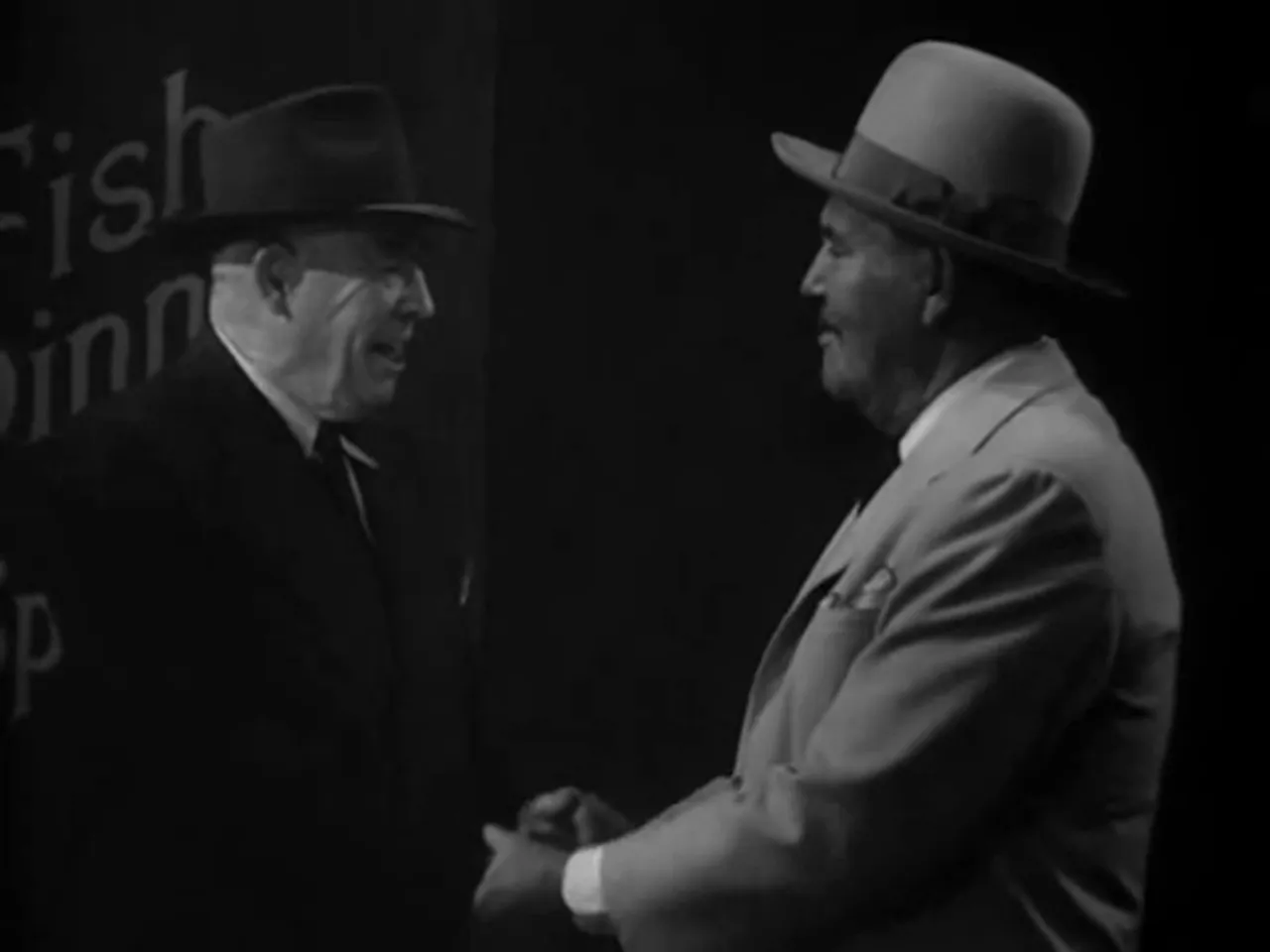
Outline of the Article
- Introduction and historical frame
- Plot overview and structural beats
- Characters and performances
- How the mystery works: devices, clues, and the ingenious poison
- Production background and studio context
- Cinematography, sound, and staging of the radio studio
- Comedy, race, and the Mantan Moreland–Ben Carter duo
- Contemporary reception and legacy
- Availability, public domain status, and why the film still matters
- Concluding appraisal
Introduction: A wartime mystery framed as a film noir movie
Released by Monogram Pictures on May 11, 1945, The Scarlet Clue occupies a particular niche: a brisk, 65‑minute detective story that blends the established conventions of the Charlie Chan franchise with wartime anxieties about espionage. Phil Rosen’s direction and the reliable presence of Sidney Toler as Charlie Chan anchor a plot that turns on stolen technical secrets — radar, of all things — and a surprisingly inventive method of murder. Read as a film noir movie in mood and implication, The Scarlet Clue borrows noir’s fascination with hidden networks, fatal traps, and the use of urban interiors as sites of menace. It is compact, often comic, occasionally melodramatic, and consistently economical in its storytelling.
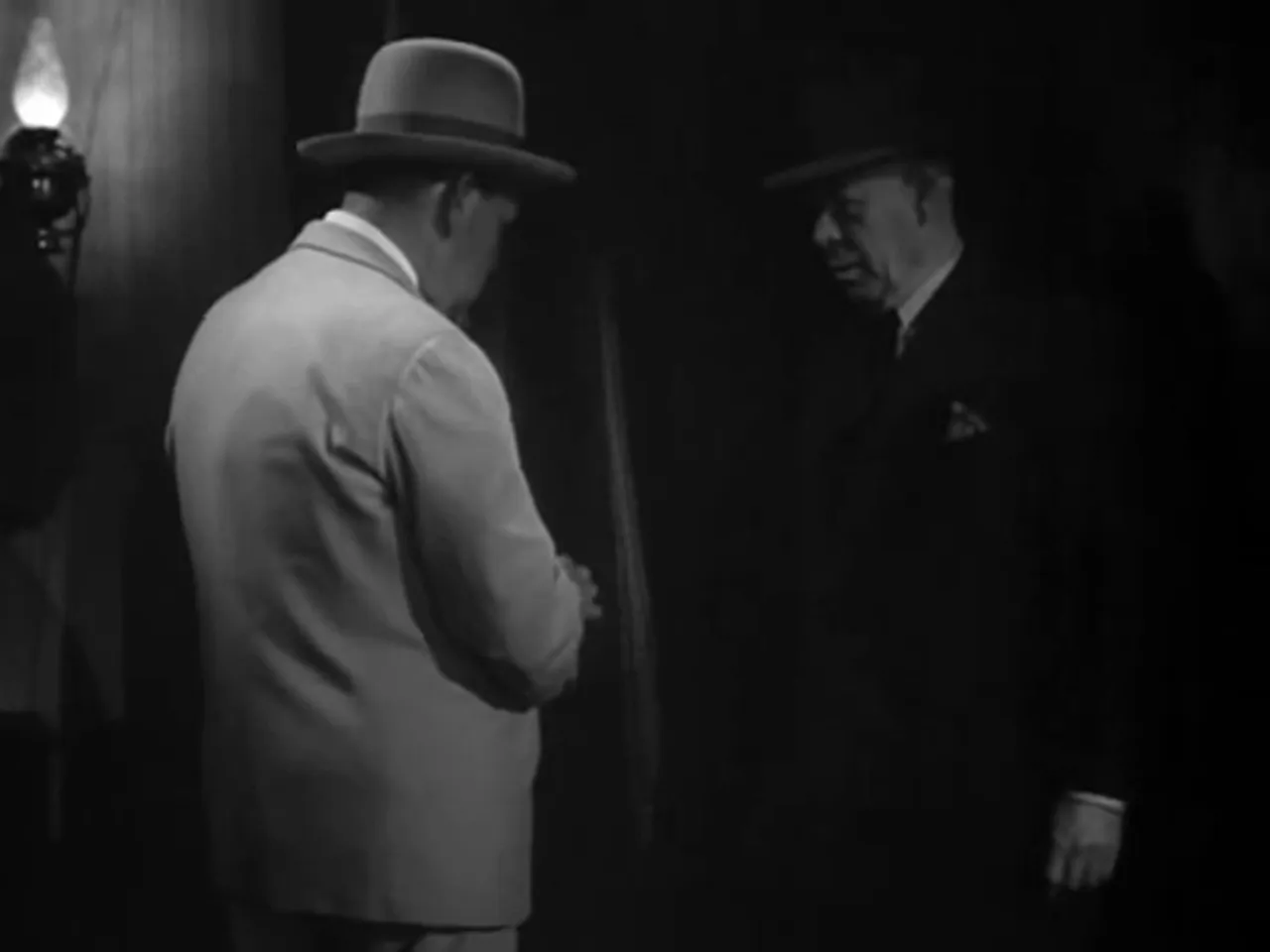
Plot Overview: The skeleton of the mystery
The Scarlet Clue opens with an investigation into espionage. Government agent Charlie Chan and Captain Flynn are tailing a man named Rausch, a known operative in a conspiracy to lift radar secrets from a research laboratory. The chase leads to a waterfront murder — Rausch is found stabbed, his dying moments suggesting a hurried escape by his killer. A bloodied footprint, later matched to a duplicate impression, becomes the starting point of a chain of inquiries.
The stolen automobile registered to radio actress Diane Hall becomes a tangible lead, and Chan’s inquiry carries him, along with his Number Three Son, Tommy, and chauffeur Birmingham Brown, into the tenth‑floor offices of the Cosmo Radio Center. In the cramped ecosystem of the building, an experimental Hamilton radar laboratory sits on the same level as the radio studios. The close proximity of advanced technology and public entertainment spaces is a thematic pivot: the film stages modern science and mass media in immediate relation to one another, and that proximity becomes the breeding ground for espionage, blackmail, and murder.
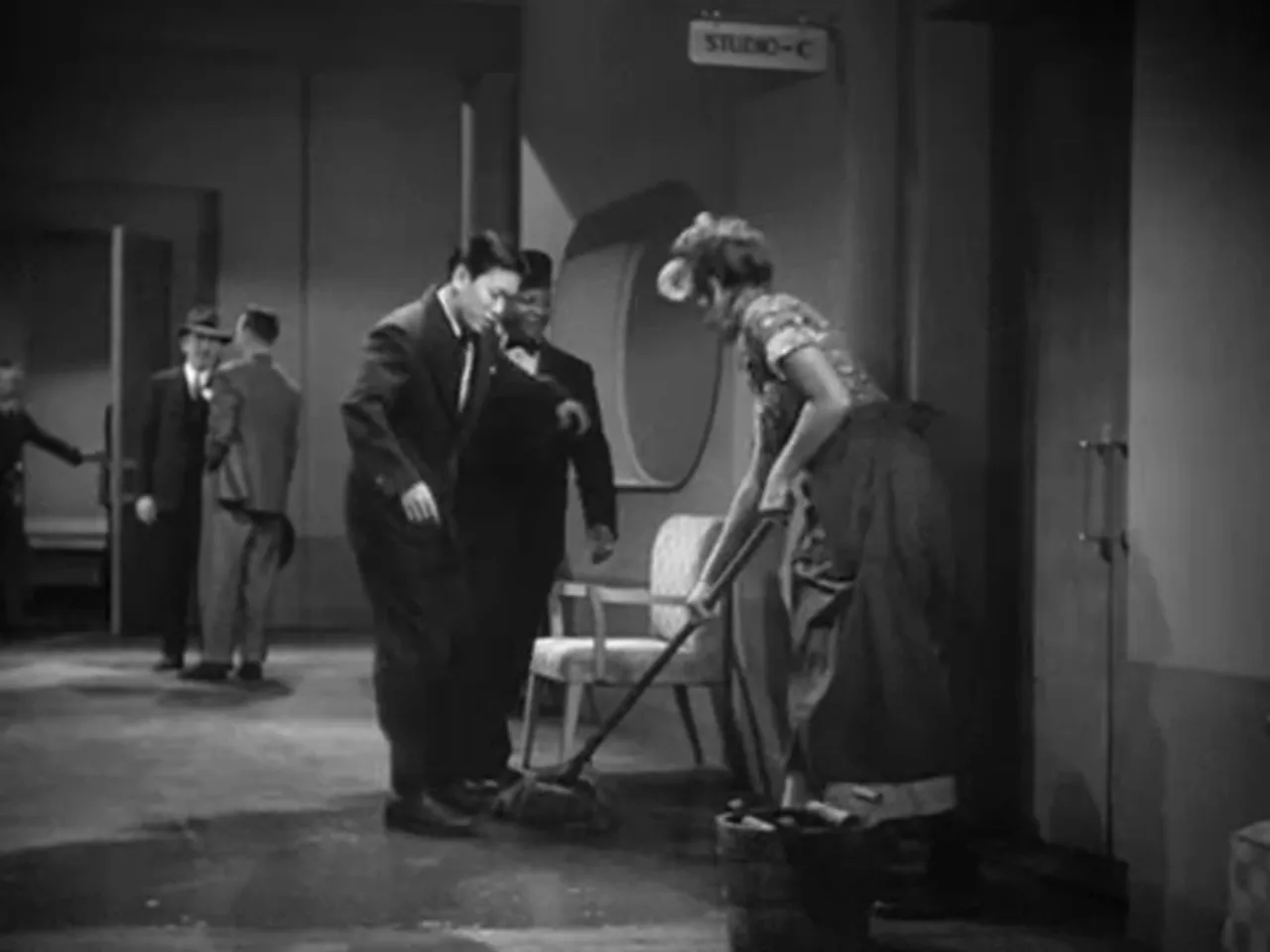
Multiple killings follow. Gloria Bayne, a young actress who had threatened to expose or blackmail the station manager Ralph Brett over borrowed cars and private matches, succumbs to a baffling, rapid death. Willie Rand, a hammy actor, later collapses and dies in similar circumstances. The deaths share an odd technical signature: a popping sound recorded on the studio tracks and microscopic fragments like bits of gelatin or glass found near the victims. Chan gradually pieces together the mechanics: a radio‑triggered capsule containing an otherwise inert gas, which in combination with smoking produces a lethal reaction. The station becomes a trap, and the master spy who coordinates the ring proves more elusive than the telephone exchanges he uses to transmit instructions.
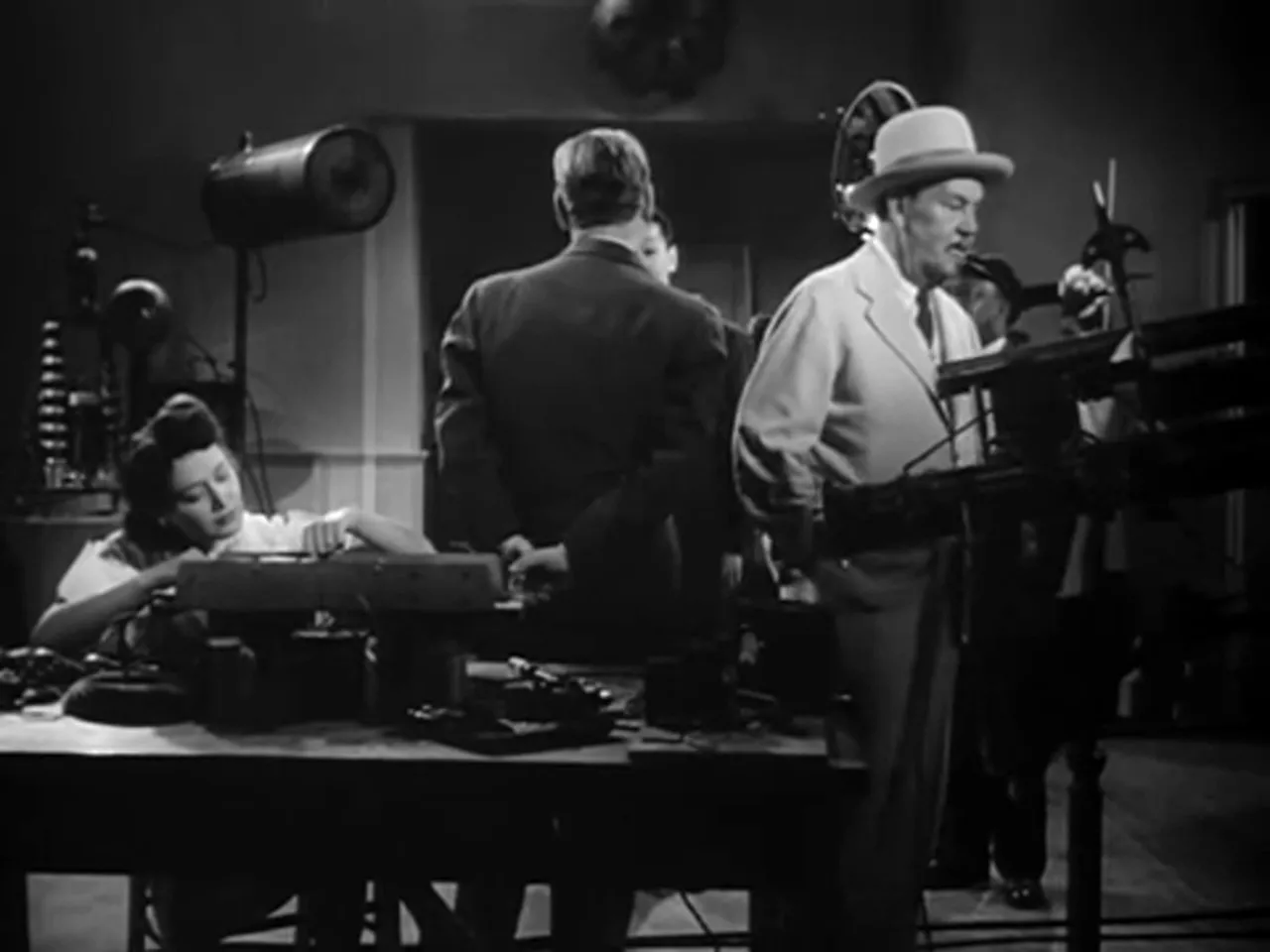
The dénouement rests on two clever devices: first, Chan’s realization about the shortwave broadcasting equipment that detonates the death capsules in the presence of a microphone, and second, a trap set to flush the hidden operative out into the open. The master spy’s methods include telephone switching, teletype messages, and a freight elevator rigged with a trapdoor. The film closes with the murderer trapped "in his own trap," a neat, if slightly perfunctory, resolution that ties together the espionage plot and the personal betrayals among the radio station staff.
Characters and Performances: Casting economy and dependable archetypes
The Scarlet Clue assembles a cast drawn from the reliable stock of Monogram repertory players. Sidney Toler’s Charlie Chan is the center of the film’s moral and intellectual gravity. Toler’s Chan is measured, observant, and patient; the detective’s routines — the gentle rebuke of assistants, the deliberate questioning of suspects, the theatrically revealed solutions — shape the film’s rhythm. The screenplay, credited to George Callahan, constructs a series of interrogations and set pieces that allow Chan to guide the audience’s attention toward technically grounded clues.
- Sidney Toler as Charlie Chan — steady, methodical, and persuasive. Toler’s Chan embodies the franchise’s formula: genial wisdom, witty aphorisms, and a cerebral approach to crime solving.
- Mantan Moreland as Birmingham Brown — the comic chauffeur and Chan’s sidekick in the field. Moreland’s timing and reactive humor provide the film’s principal comic relief and a popular draw at the box office.
- Ben Carter as Ben — paired with Moreland as a comic foil, Carter rounds out a duo that frequently interrupts tense moments with jokes and business that both relieve and complicate dramatic beats.
- Benson Fong as Tommy Chan — Number Three Son, who functions as an enthusiastic apprentice; his presence continues the Chan tradition of family‑centered assistance.
- I. Stanford Jolley as Ralph Brett — the manager whose vanity and secret ties make him suspicious, a plausible intermediary in the spy ring.
- Janet Shaw as Gloria Bayne and Helen Deverell as Diane Hall — women in the radio business whose livelihoods and reputations put them in the crosshairs of blackmail and espionage.
- Supporting players include Virginia Brissac, Jack Norton, Emmett Vogan, and Charles Wagenheim in the role of Rausch; together they create a panoply of conventional suspects situated within the radio studio’s small society.
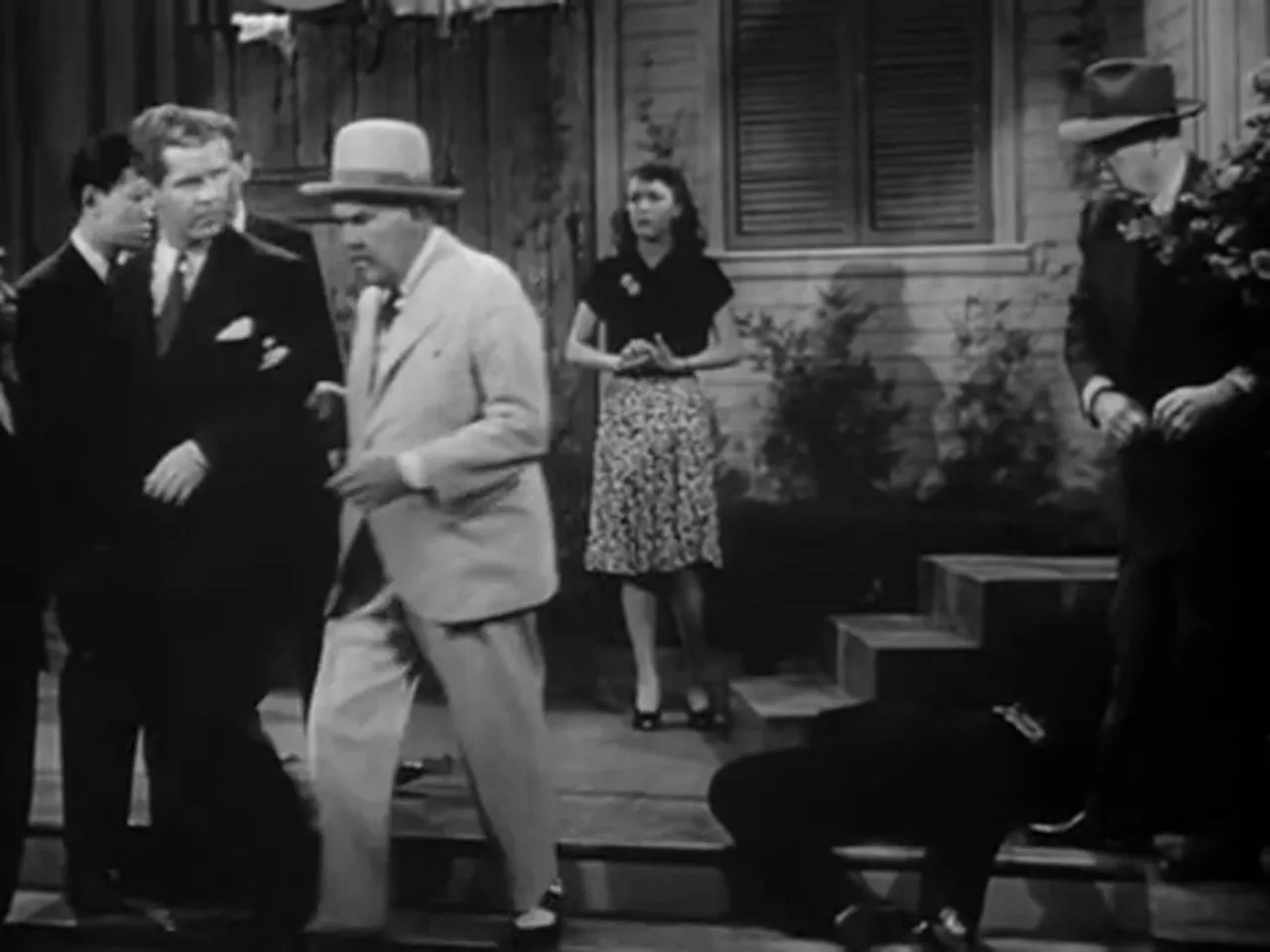
Performance style is intentionally theatrical; the film borrows the heightened rhythms of radio drama, translating them to visual performance. Many characters are written as broad types — the tyrannical sponsor, the gossiping actor, the harassed manager — and the actors deliver accordingly. Where the film benefits is in casting players who understand the stagey demands of the script and who can make the line readings feel lived‑in rather than simply functional.
How the Mystery Works: Forensic logic and a clever technological murder
At the heart of The Scarlet Clue lies an inventive murder method that capitalizes on wartime scientific anxieties and the cobbling together of everyday materials into lethal mechanisms. The film’s forensic core is visible on the surface: minute fragments picked from fallen actors’ clothing, popping noises on recorded soundtracks, and chemical tests that rule out conventional toxins. The investigator’s work moves from the material (a ruptured capsule) to the technological (a shortwave radio rig) to the social (who had access to studio microphones and a motive to silence a performer).
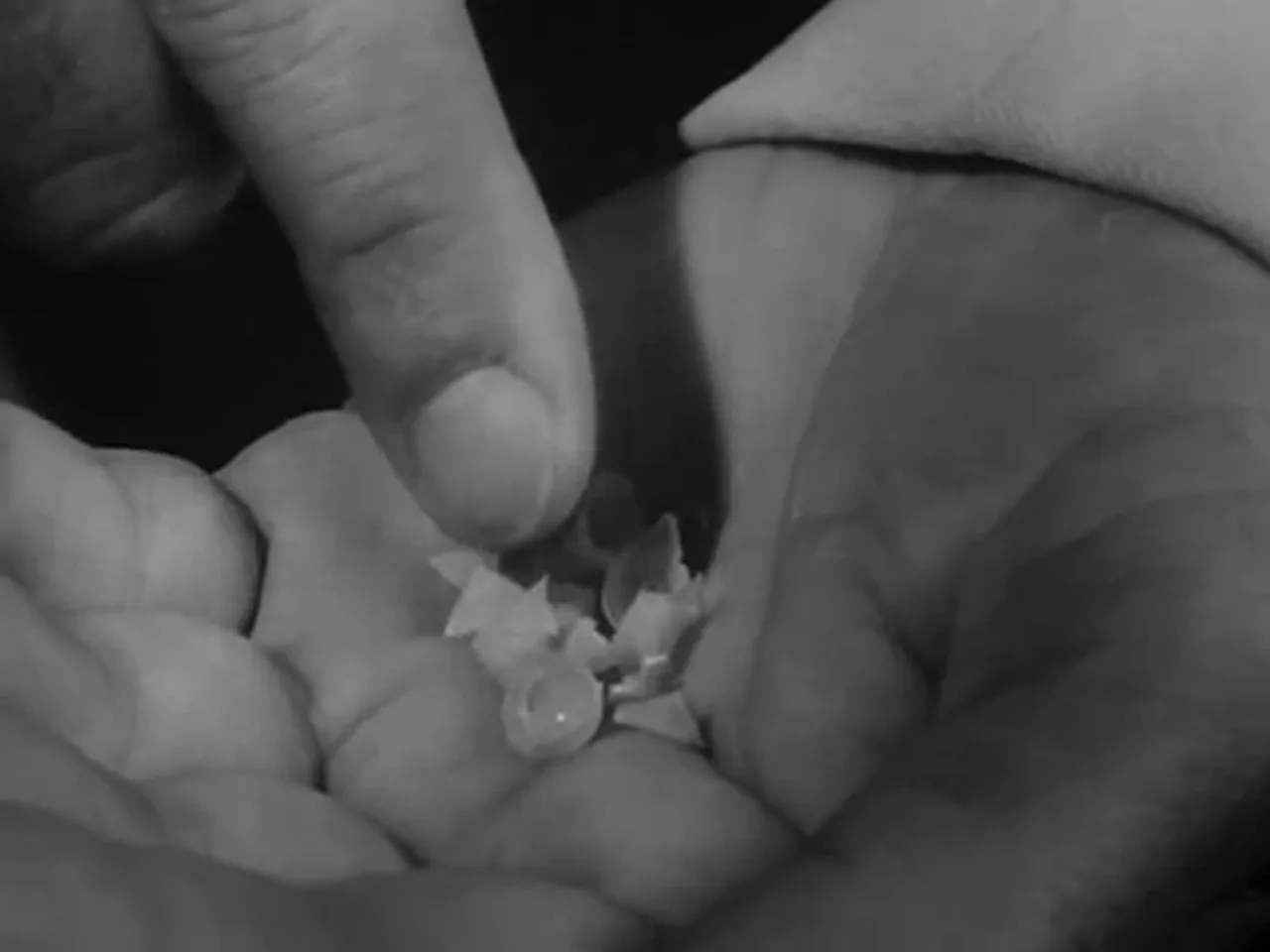
The transcript reveals the pivotal technical exchange: an inert gas contained in a gelatin or glass capsule becomes lethal only when the victim subsequently smokes a cigarette. The explosion is initiated remotely by a shortwave radio beam that detonates the capsule when a performer approaches a microphone. The combination — gas + nicotine — produces instant death. It is the sort of mechanical ingenuity that suits a film noir movie sensibility, where commonplace modern devices can be perverted into instruments of murder.
Further complexity arrives with the telephone switching and teletype mechanism. The station manager, Ralph Brett, can receive commands but cannot trace them to a single source: the calls are switched by an intermediary, and teletype messages return through a circuitous route. This layering of intermediaries is classic spy fiction: the figure at the top who remains invisible because he communicates only through switches and relays. Chan’s solution, accordingly, involves isolating the technological infrastructure — the shortwave set, the teletype machine, and the switchboard — and cornering the operator within the building. It is procedural work deployed as drama, and it creates the film’s final trap.
Production Background and Studio Context
The Scarlet Clue was produced by Monogram Pictures, the low‑budget studio that specialized in efficient genre fare and established franchises. The film’s production history is minor but instructive: it began under the title The Radio Mystery and was retitled in February 1945 to The Scarlet Clue, a modest marketing recalibration following Universal’s success with The Scarlet Claw. The change is emblematic of Monogram’s sensibility: adapt quickly, rebrand when advantageous, and keep distribution lines moving.
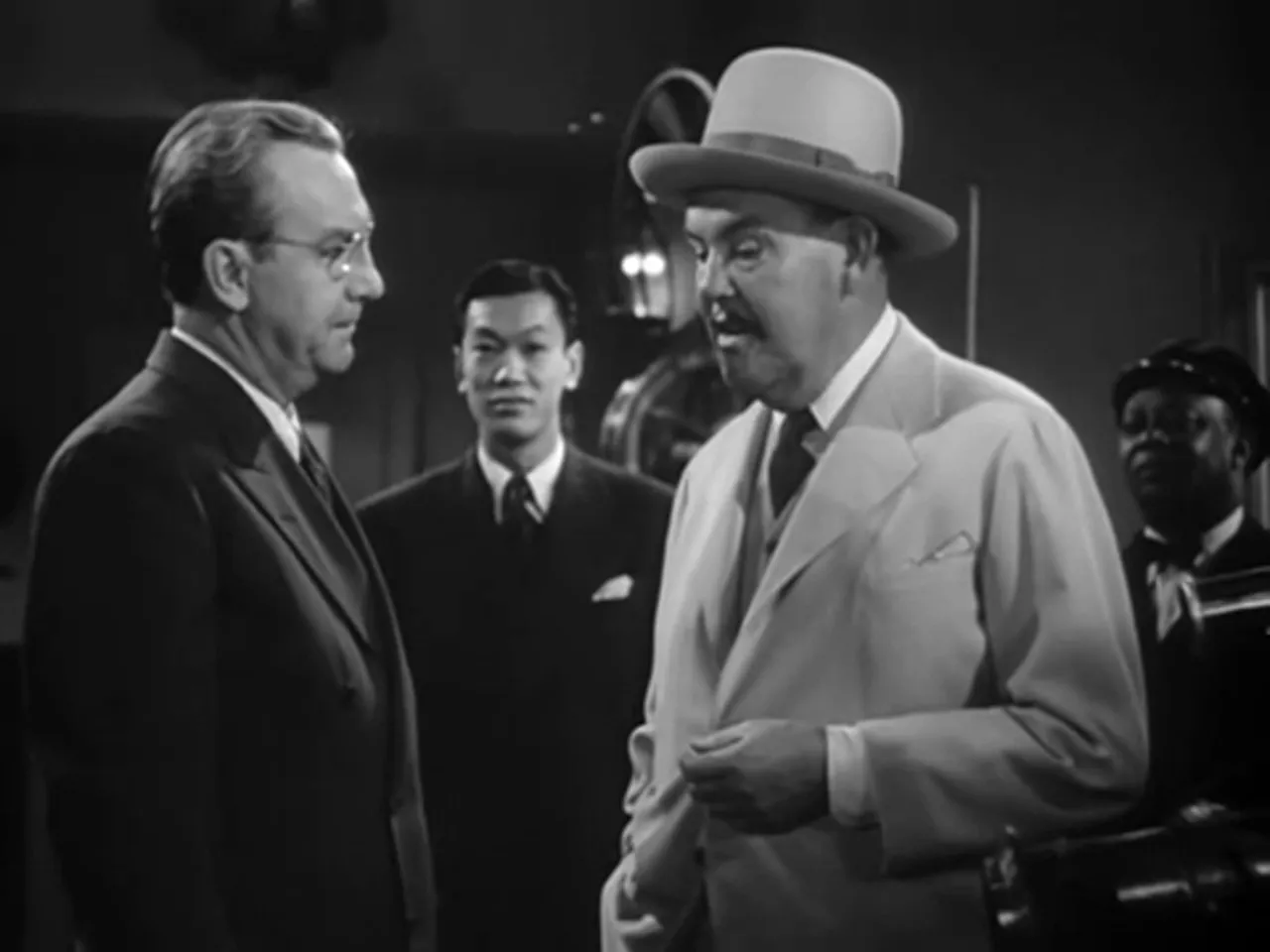
James S. Burkett produced the film; George Callahan wrote the screenplay based on characters created by Earl Derr Biggers. The film’s technician credits are succinct: William A. Sickner handled cinematography, Richard C. Currier edited, and Edward J. Kay provided the music. The production wraps its plot around a single high‑concept device — the radar lab and radio station occupying the same floor — enabling the action to be contained, inexpensive to stage, and narratively dense. The film’s running time, 65 minutes, is another sign of Monogram’s economy: a brisk runtime that suits double-bill programming and keeps the story taut.
Cinematography, Sound, and the Staging of Radio
Within the limits of budget, cinematographer William A. Sickner crafts a look that leans into the shadowed interiors and the claustrophobic verticality of the skyscraper setting. The Hamilton laboratory, with its climate tunnel capable of simulating heat and cold extremes, provides a striking visual contrast to the warm, electric intimacy of the radio studios. These interiorities contribute to the film noir movie atmosphere: interiors seem to close in on characters; elevators and stairways are potential sites of danger; and the camera frames suspects in tight compositions that suggest claustrophobia and implication.
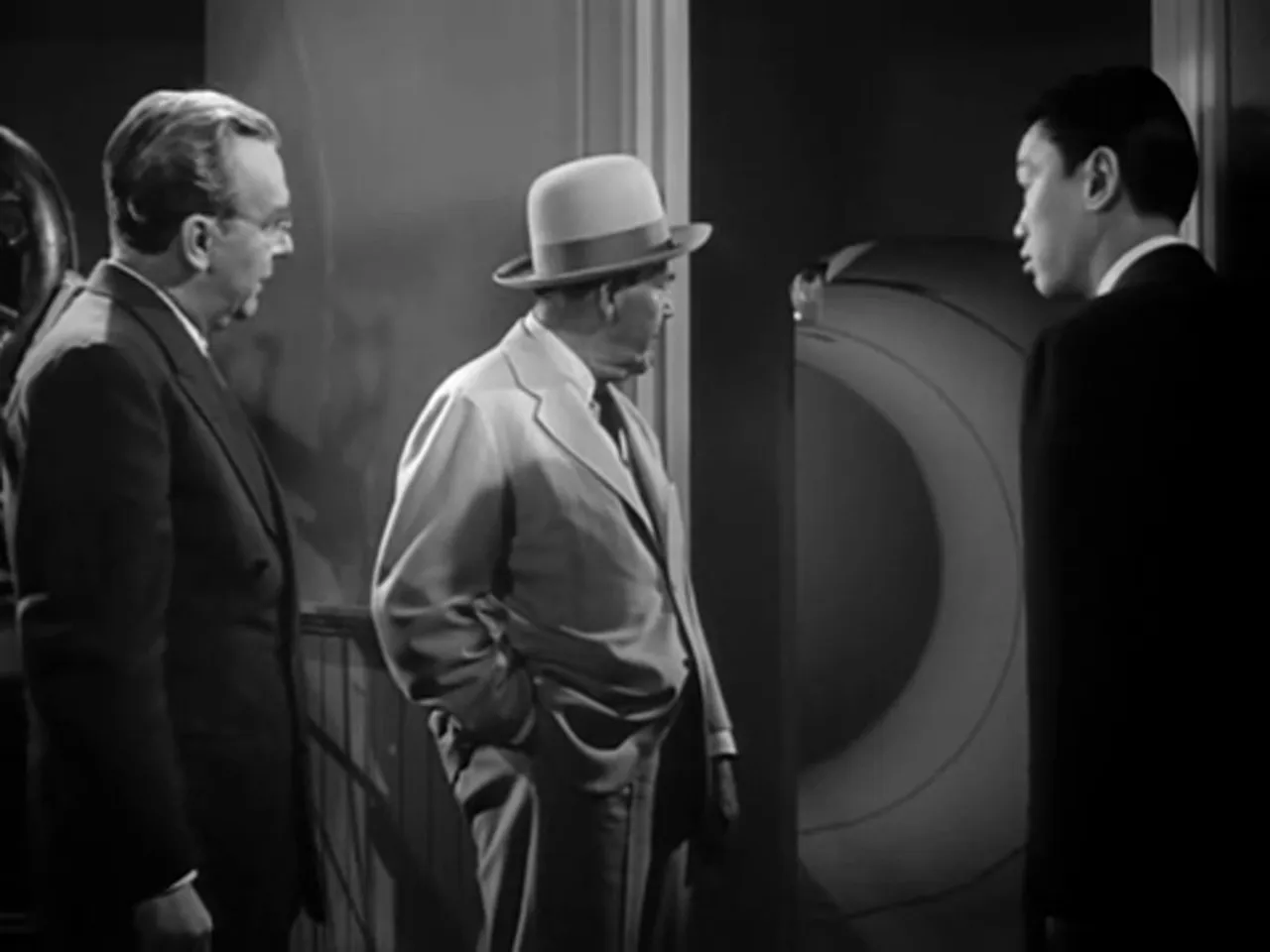
Perhaps most importantly, the film stages sound both as clue and instrument. A popping noise recorded on a program tape becomes the key to understanding the murders. The film foregrounds the recorded voice — radio as both broadcast medium and murder weapon. The diegesis of radio — microphones, shortwave beams, teletype — converges with the film’s diegesis of forensic evidence. In this respect The Scarlet Clue is self‑reflexive: it dramatizes the power and danger of modern communications technology, an anxiety very much of its moment.
Comedy and Race: The Mantan Moreland–Ben Carter Partnership
One cannot assess The Scarlet Clue without acknowledging the comic partnership of Mantan Moreland and Ben Carter. As Birmingham Brown and Ben, the pair supply a running comic thread that undercuts tension and, for contemporary audiences, provided much of the film’s box office appeal. The Wikipedia record notes that Moreland and Carter became so popular that they embarked on an eight‑week coast‑to‑coast personal appearance tour, and Moreland’s popularity led to his absence from subsequent Charlie Chan pictures due to the demand for live appearances.
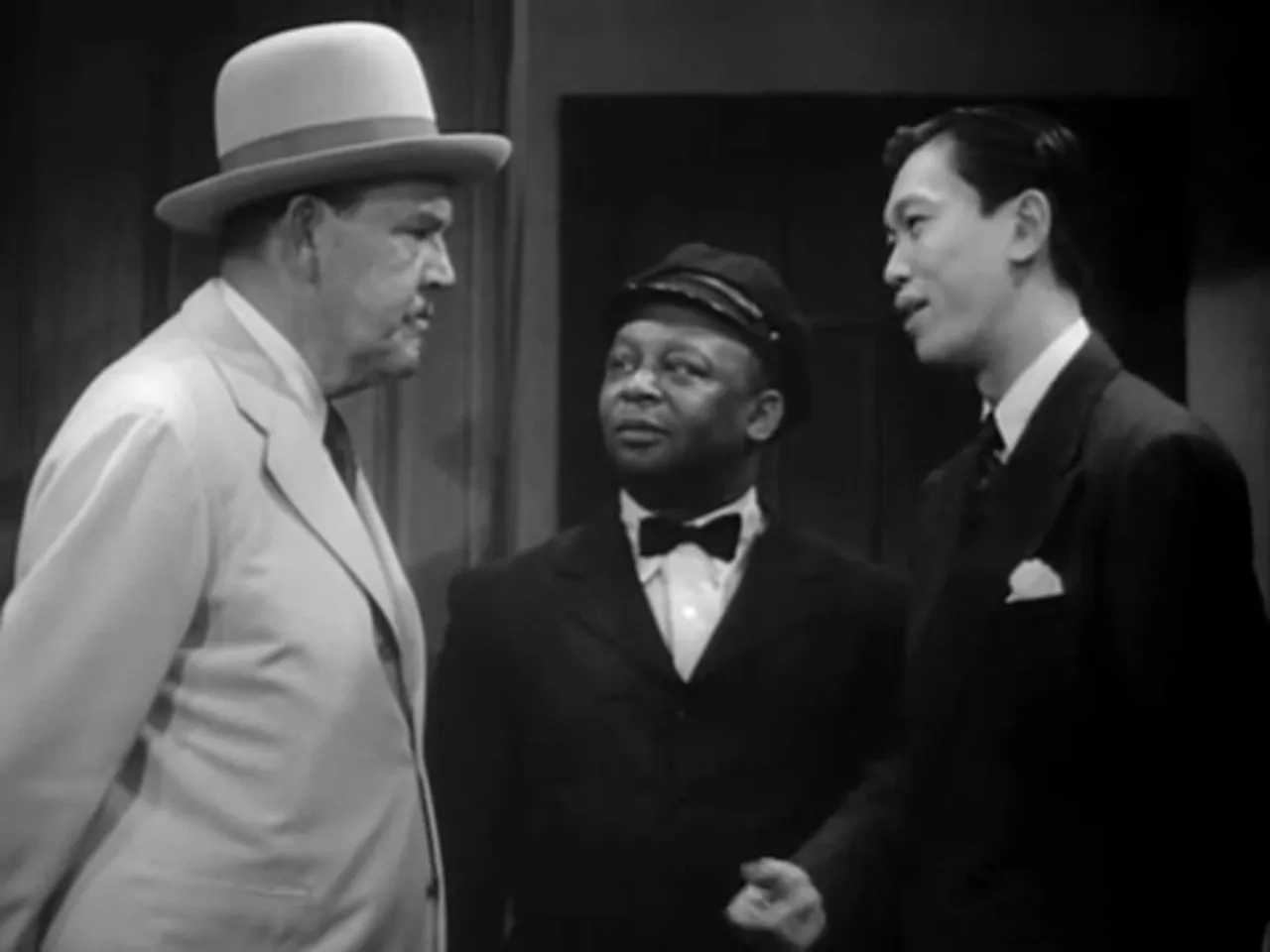
From the perspective of a modern critic, the duo’s material must be read in context. Their routines often rely on broad, racially inflected stereotypes which were common in mainstream 1940s Hollywood comedies. At the same time, Moreland and Carter are professional comics who deliver precise timing and a grounded physicality; their jokes are integrated into the plot (e.g., their habit of "finding clues" in cigarette butts), and their presence alters the film’s pacing. A candid contemporary criticism must recognize both their talent and the problematic nature of the period’s racialized humor while placing it within a historically informed framework.
Reception, Box Office, and Contemporary Reviews
The Scarlet Clue opened to generally positive notices among trade papers and reviewers. Exhibitor described it as "one of the better Chan thrillers" and praised its ability to maintain interest across its compact runtime. The Hollywood Reporter commended the film’s mixture of comedy and suspense, singling out the Moreland–Carter team for providing ample opportunity to "gag" and entertain. The New York Daily News reviewer Wanda Hale praised the film’s capacity to keep the viewer cognitively engaged, noting that it keeps one's mind active in attempting to beat Charlie to the solution. Variety observed that the film "actually has suspense," and commended the script for maintaining mystery and delivering a denouement that takes viewers by surprise.
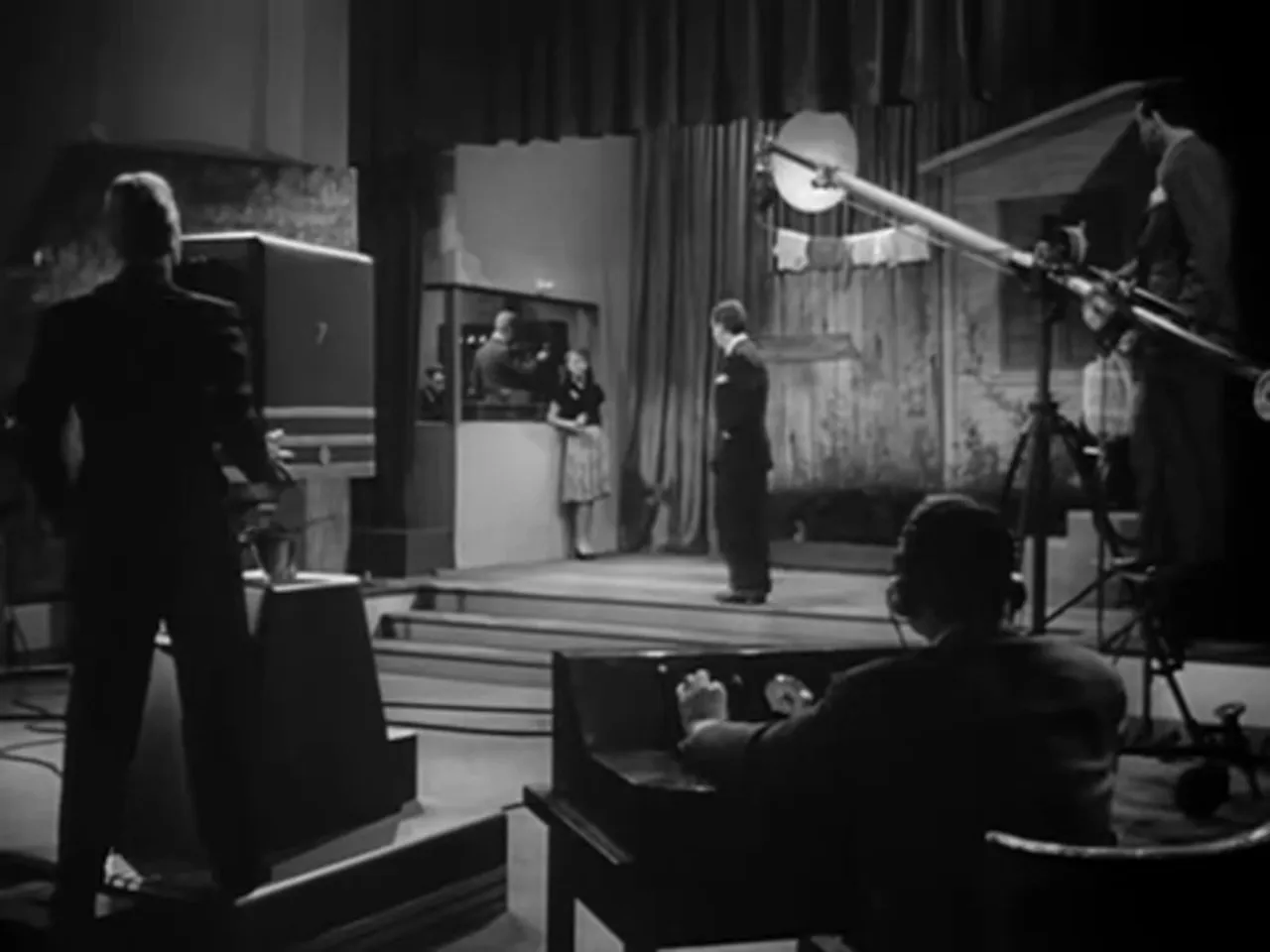
These contemporary responses underline an important point: The Scarlet Clue succeeded not as prestige filmmaking but as reliable genre material. As a film noir movie read through the Charlie Chan lens, it balanced the expectations of its audience — a measure of comedy, a puzzle to be solved, and an economical, satisfying payoff. It was serviceable, cleverly plotted, and technically curious: the kind of film that found its market in double bills and neighborhood houses, and which has since persisted through television screenings and archive availability.
Political and Wartime Resonances: Radar, Secrecy, and National Anxiety
The choice of radar as the stolen secret around which the plot orbits is not incidental. In 1945, radar technologies had been crucial to the Allied war effort; the notion that technical know‑how could be stolen, sold, or weaponized would have been an immediate and topical anxiety. The Scarlet Clue stages this anxiety theatrically: the Hamilton laboratory’s weather tunnel, the guarded safe, and the hint that originals of patents are already with the government establish a background of state secrecy and wartime urgency.
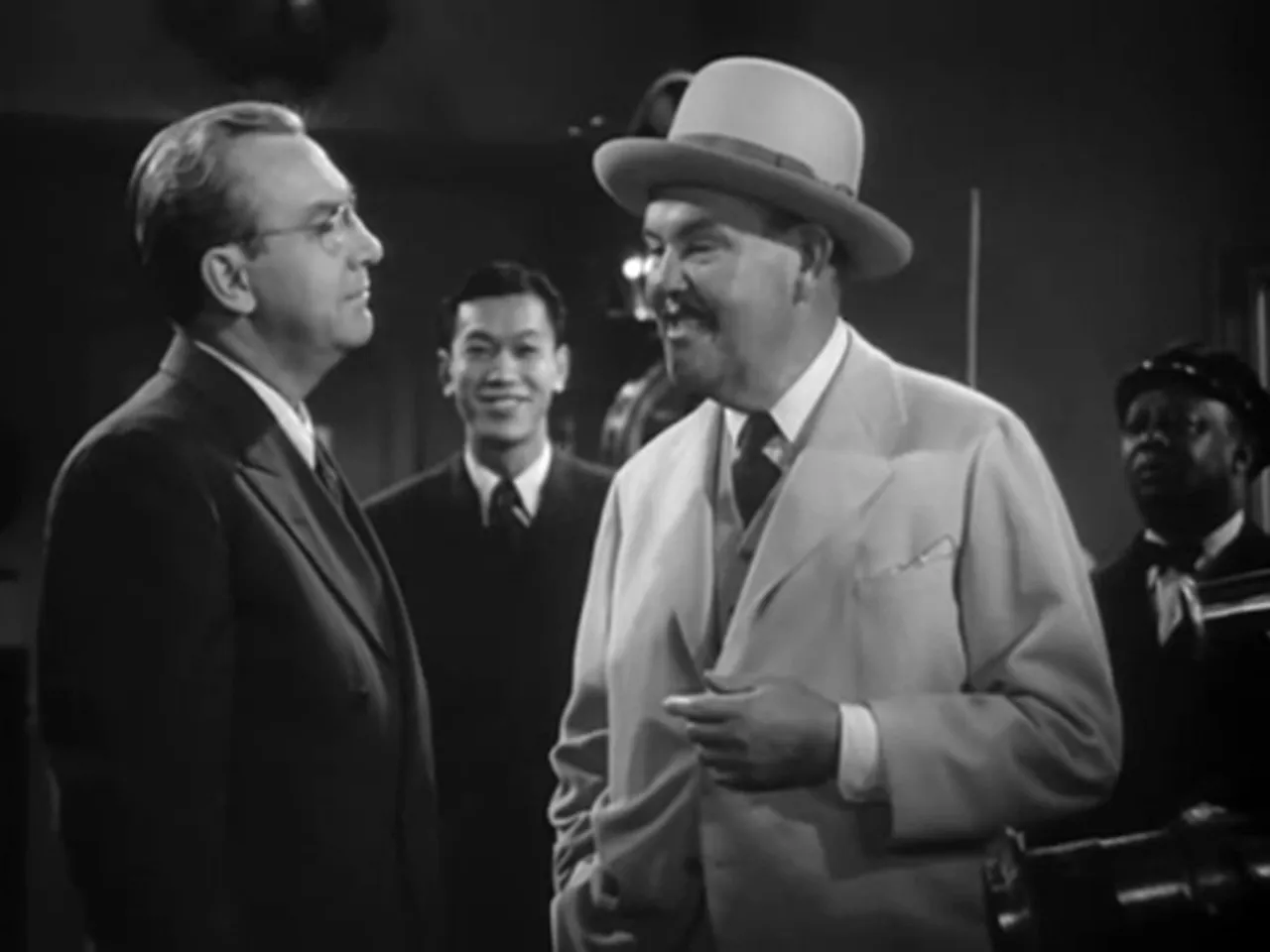
The film’s espionage tropes — intermediaries who switch calls, unknown leaders operating through teletype, and the use of mundane props (cigarettes, matches) to carry lethal consequences — suggest a networked threat rather than a lone killer. This networked structure mirrors wartime fears about internal subversion and complicates the moral geography of the picture: the villain is not simply an individual but a node in a broader infrastructure of betrayal. Read this way, The Scarlet Clue functions as a film noir movie that channels wartime paranoia into detective form.
Technical Credits: Craft under constraint
While Monogram's budget constrained production values, the film’s craft credits point to professionals who knew how to make low budgets look serviceable. William A. Sickner’s cinematography supplies the necessary tonal range to suggest menace within studio spaces. Richard C. Currier’s editing keeps the 65-minute runtime tight, and Edward J. Kay’s score supplies the appropriate cues for mystery and comic relief. The result is a picture that demonstrates how technical competence can elevate modest materials; the film looks and sounds as it must for its genre — unobtrusive, functional, and occasionally inventive.
Public Domain and Availability
The Scarlet Clue is presumed to be in the public domain due to the omission of a valid copyright notice on original prints, a fact that explains its wide availability in archive collections and online repositories. This public domain status has advantages for historians and enthusiasts: the film circulates freely, can be screened without licensing costs, and forms part of the accessible record of mid‑century genre cinema. For scholars of the Charlie Chan series, the film is an instructive case study in how low‑budget studios sustained franchise product under wartime conditions.
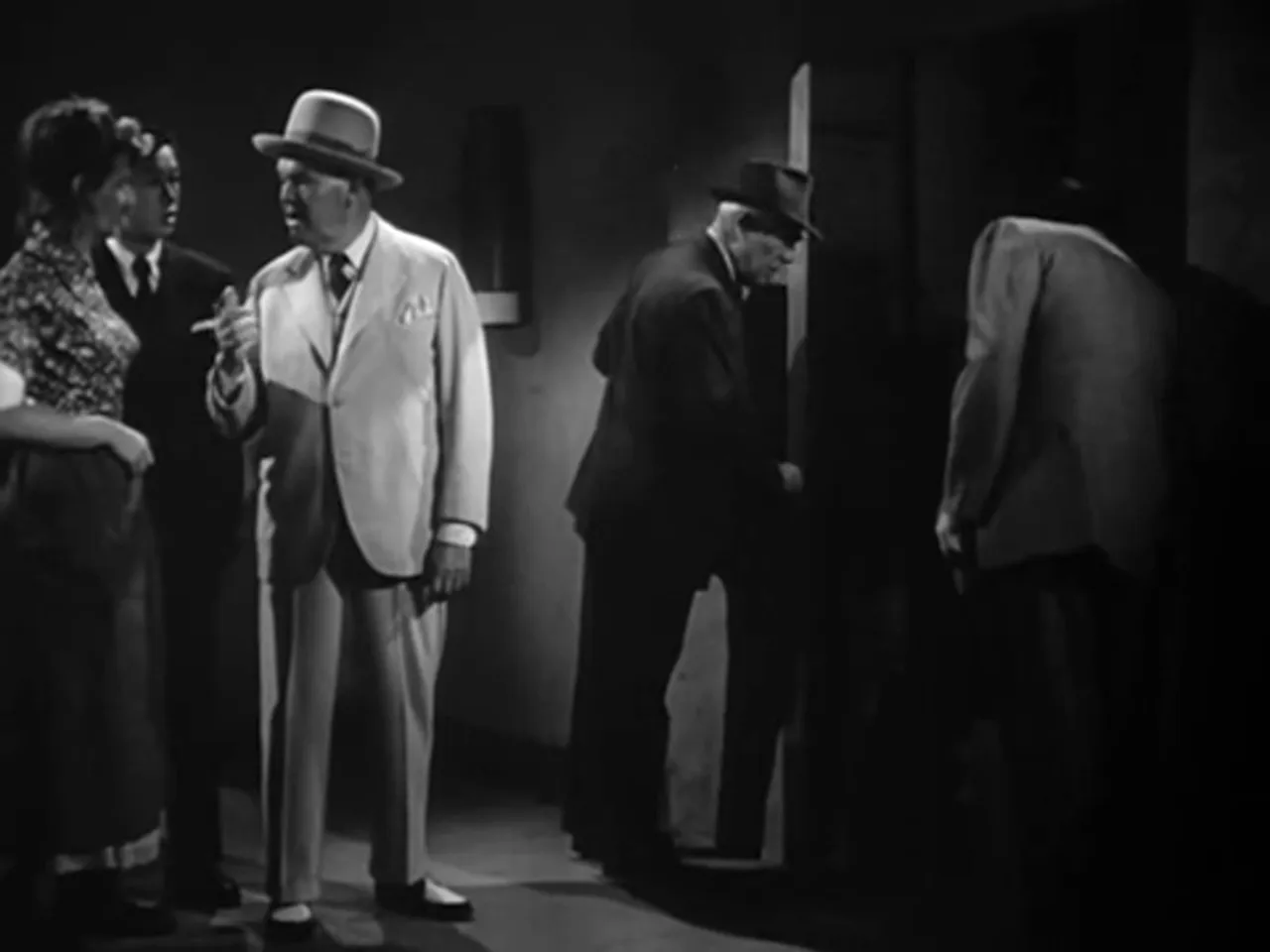
Why Watch The Scarlet Clue? Arguments for contemporary viewers
- Historical curiosity: The picture offers a compact portal into wartime studio practice and the Charlie Chan formulaic structure.
- Technical ingenuity: The radio‑triggered poison and the elevator trap display the kind of plot mechanics that make genre cinema intellectually enjoyable.
- Performancestudy: Sidney Toler’s Chan exemplifies enduring detective archetypes; Moreland and Carter’s comedy underscores the centrality of star turns even in low-budget film noir movie contexts.
- Archival access: Because the film is public domain, it is easy to obtain and re‑examine, making it an ideal subject for classroom viewing or cinephile retrospectives.
Seen as a film noir movie, The Scarlet Clue is not an expressionist masterpiece; rather, it is a pragmatic, serviceable specimen that borrows noir motifs without fully embracing the aesthetic extremities of the movement. Its pleasures are procedural and plot‑driven: the audience is invited not to admire shadow‑soaked mise‑en‑scène so much as to follow Chan’s methodical unraveling of technological trickery.
Contextual Notes: Title changes, tours, and series continuity
A few production footnotes illuminate how studio economics shaped the film. The Scarlet Clue began life as The Radio Mystery before Monogram, wary of potential confusion or opportunistic marketing, converted the title in February 1945. The change was made in the wake of Universal's success with The Scarlet Claw, a move illustrating how studios watched one another and adjusted strategies quickly to capitalize on audience recognition.
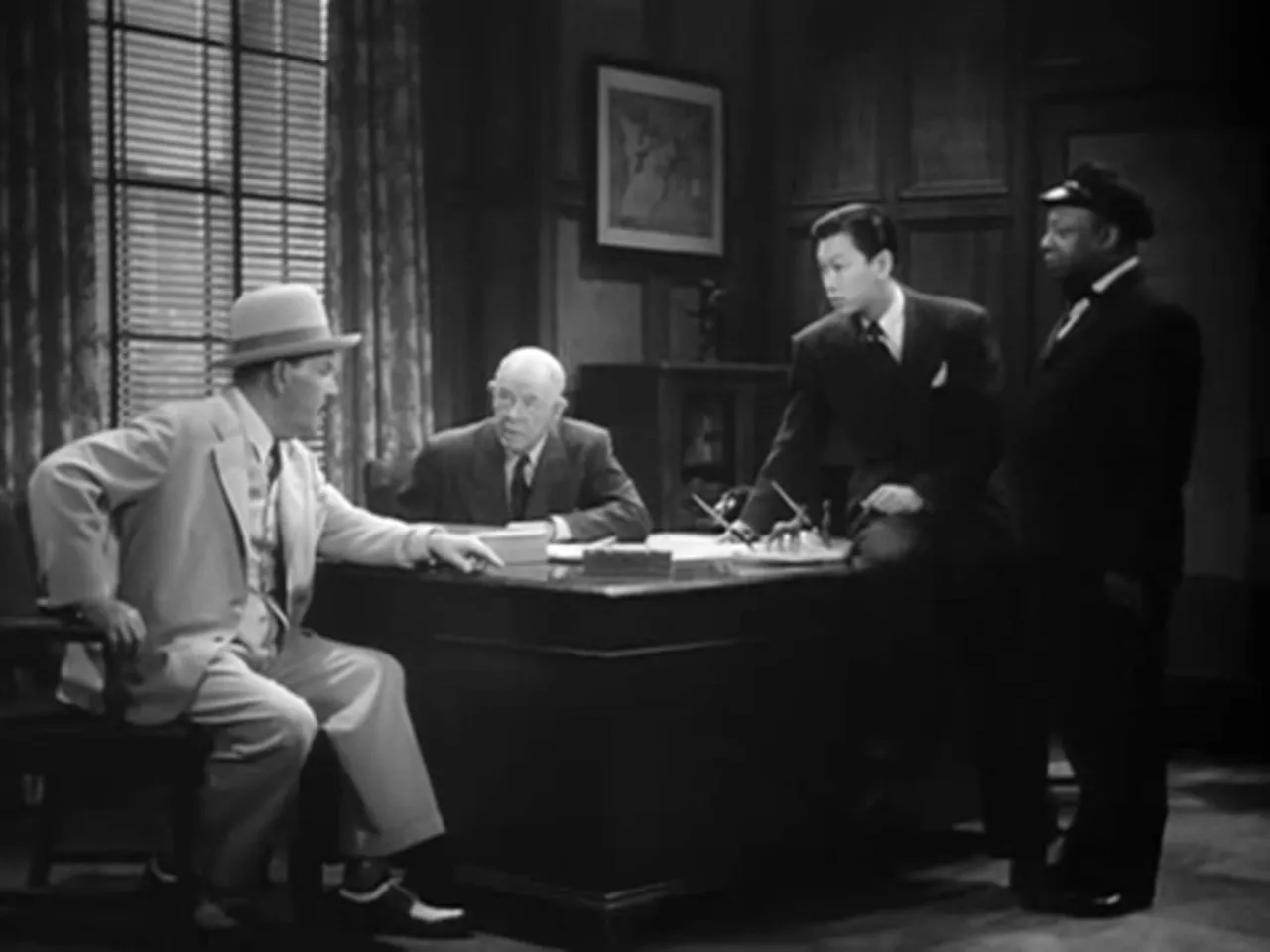
Moreland and Carter’s popularity led to live appearances that temporarily removed Moreland from subsequent Chan films. Their success outside the cinema also demonstrates the porous boundary between screen and stage for 1940s performers: comic teams could use cinematic exposure to build personal appearance circuits, and such circuits could, in turn, pull individual performers away from scheduled production commitments. This dynamic affected Monogram’s casting decisions in the immediate aftermath of The Scarlet Clue.
Ethical Reappraisal: The film’s humor and racial representation
Contemporary criticism must confront the film’s use of racially stereotyped comedy. The Moreland–Carter routine, while professionally executed, relies on the conventions of an era that routinely exoticized Black performers and limited their roles to supporting comic relief. A responsible viewing acknowledges both the talent and the limitations: Moreland and Carter are skilled comedians whose presence significantly shapes the film’s audience appeal, but their roles also reflect the restricted opportunities available to Black actors in mainstream Hollywood at the time.
Any modern presentation of The Scarlet Clue should be accompanied by contextual framing that explains these constraints. Historical context allows viewers to see the performers’ craft without condoning the social arrangements that produced such performances. As a film noir movie and a historical document, The Scarlet Clue benefits from critical framing that addresses both artistry and cultural limitation.
Legacy and Influence: How The Scarlet Clue fits the Charlie Chan corpus
The Scarlet Clue contributes a distinctive chapter to the Charlie Chan canon. It is not the most famous of the series, nor does it aim to be. Instead, the film exemplifies the franchise’s resilience: Chan can be placed in any topical setting — wartime espionage, city corruption, or provincial murder — and his patient intelligence will reorganize narrative chaos into an intelligible solution. The film also demonstrates the franchise’s capacity to fold contemporary technological dread into detective procedure: radar, shortwave beams, and teletype machines replace the locked rooms of earlier mystery fiction, giving the detective new mediums to interrogate.
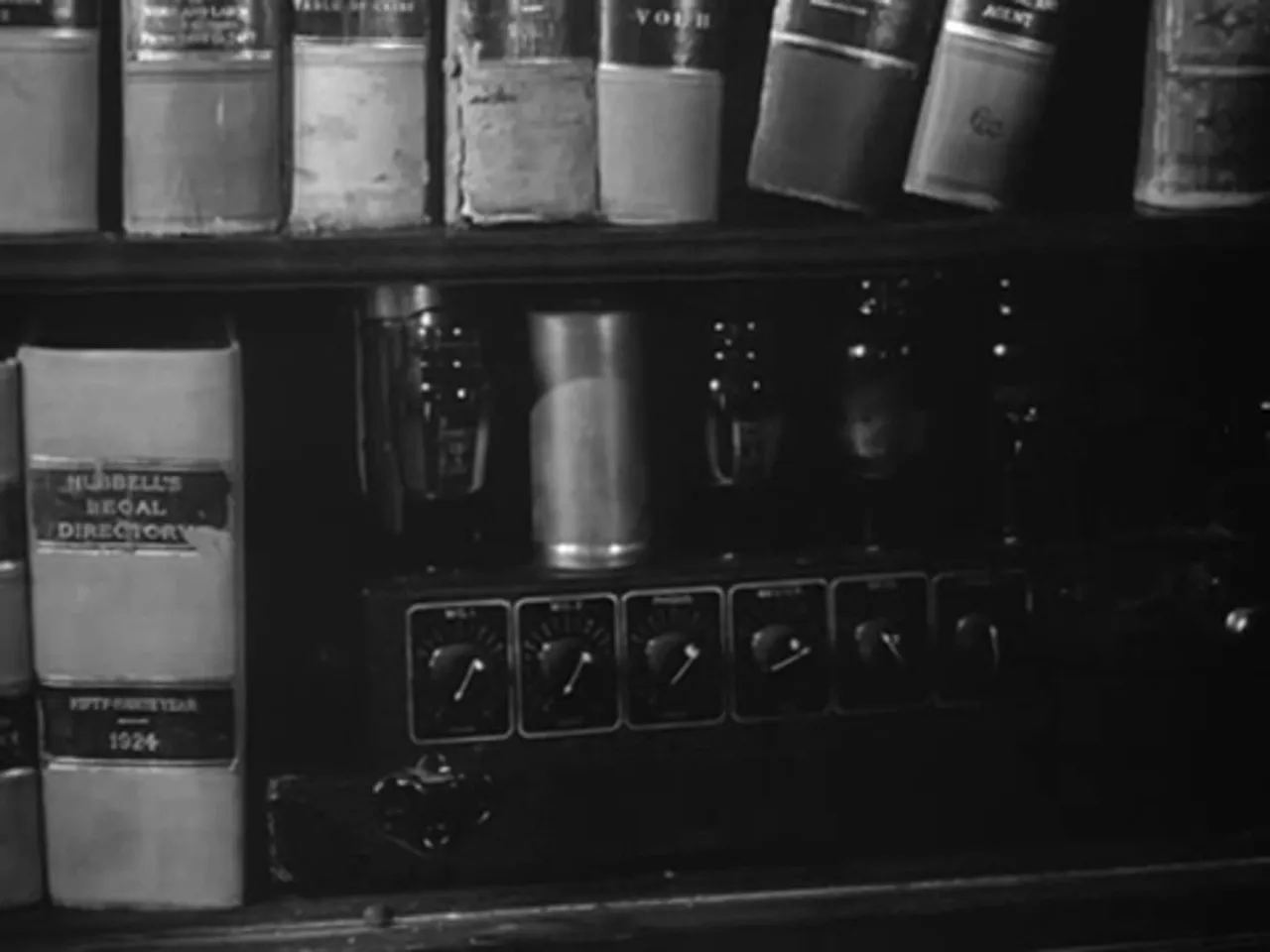
Viewed across the series, The Scarlet Clue is emblematic of the Chan films’ ability to adapt to their moment, combining pulp procedural energy with topical concerns. The film’s combination of humor, technical curiosity, and compact plotting is a tidy example of how low‑budget series filmmaking could be both responsive and formulaic.
Final Appraisal: Strengths, weaknesses, and the enduring puzzle
The Scarlet Clue’s strengths are clear: a cleverly plotted central conceit, an efficient directorial hand, and a cast that understands genre mechanics. Sidney Toler’s Chan is urbane and authoritative; the supporting players are deliberately typed and therefore immediately legible; and the film’s economy ensures narrative propulsion from beginning to end. The creative conceit that converts a microphone and a shortwave beam into a murder weapon is clever enough to sustain curiosity, and the elevator trap serves as a gratifying mechanical payoff.
The film’s weaknesses largely stem from its limitations. Monogram’s budget restricts visual scope and forces theatrical stagings; some suspects function as mere names on a list rather than fully realized characters; and the comic material, valuable for audience engagement, sometimes undercuts tonal cohesion. Moreover, racialized humor and stereotyped supporting roles require candid contemporary commentary when presenting the film to modern audiences.
Nonetheless, as a film noir movie framed within the Charlie Chan tradition, The Scarlet Clue is a lively, instructive specimen. It combines wartime technological anxiety with old‑fashioned detection, and it rewards viewers who enjoy clever plotting and historical texture. The film’s modest ambition and sustained ingenuity make it a worthwhile subject for cinephiles, historians, and mystery fans alike.
Where to find it and viewing suggestions
Because The Scarlet Clue is presumed to be in the public domain, it is widely available through archive collections and online repositories. Viewers interested in studying the film in context should pair a screening with readings on wartime censorship, Monogram’s production strategies, and the Charlie Chan character’s broader cultural resonance. In a classroom setting, juxtaposing The Scarlet Clue with a high‑budget noir of the same year illuminates how aesthetic and economic constraints yield different cinematic strategies for handling similar thematic concerns.
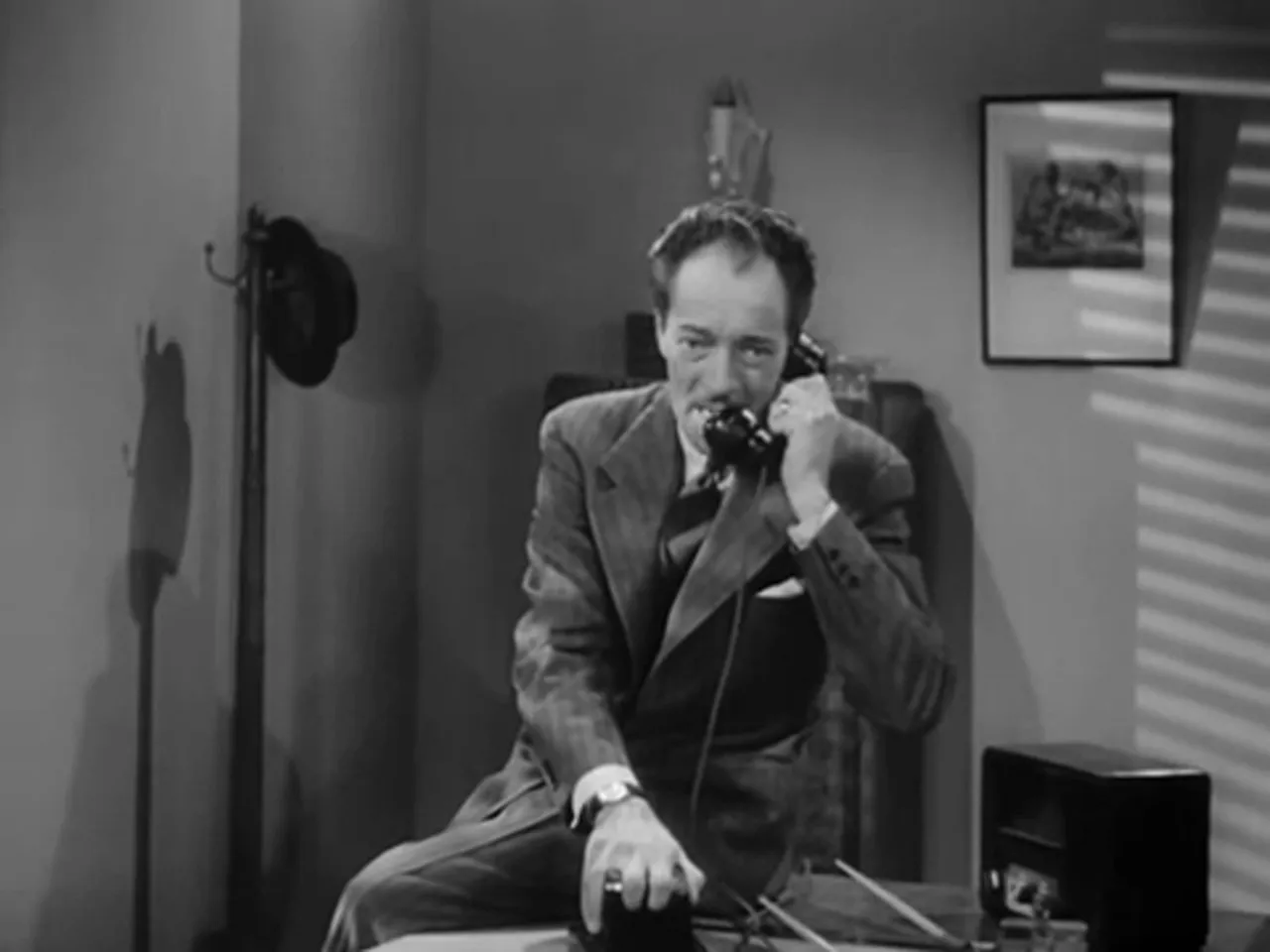
Conclusion: The Scarlet Clue’s place in the genre canon
The Scarlet Clue is not a grandmasterwork of the film noir movie canon, but it is an exemplar of mid‑century genre craftsmanship. It demonstrates how a small studio could mount topical stories, deploy technical ingenuity as plot engine, and produce spectator satisfaction within tight fiscal and temporal limits. For enthusiasts of classic crime cinema, it offers a compact entertainment that reveals more than a little about how wartime concerns, radio culture, and studio pragmatics converged on the screen.
Viewed today, The Scarlet Clue reads as both artifact and entertainment: a wartime mystery that uses scientific fear, broadcast technology, and the play of suspicion to articulate a tale of betrayal and detection. It rewards close attention, particularly to the way clues are choreographed, and it remains a useful, pleasurable case study for anyone examining the overlap between popular mystery series and the darker impulses of the film noir movie tradition.
